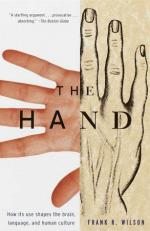
|
| Name: _________________________ | Period: ___________________ |
This test consists of 5 multiple choice questions, 5 short answer questions, and 10 short essay questions.
Multiple Choice Questions
1. From what does the word neuron derive its meaning?
(a) A Slavic word for transmit.
(b) A Latin word for cord or fiber.
(c) A Greek word for cord or fiber.
(d) A Slavic word for entangle
2. On the other hand, why might juggling have a use?
(a) The balls can be thrown at a robber.
(b) It can give you aerobic exercise if you do it vigorously.
(c) It can earn money on the street corner.
(d) It involves the complementary processes of throwing and catching.
3. What does juggling as learned and performed by Percelly provide?
(a) A way to have fun in becoming a better tennis player.
(b) Good daily exercise.
(c) A way to become a professional tennis player.
(d) An entertaining dimension to understanding the mind-body dichotomy.
4. How does the conscious dimension of action occur?
(a) With the thought of moving.
(b) With the movement itself.
(c) There is no conscious dimension of action.
(d) With the unconscious thought first.
5. What does the addition and transport of weight by the upper body change?
(a) The speed at which the body can move.
(b) The ability to play a sport.
(c) The buoyancy of the body.
(d) The center of gravity.
Short Answer Questions
1. According to Wilson, why do children not usually enjoy doing juggling?
2. What helps maintain a skill that is learned?
3. How does a goat eat a piece of candy?
4. How does David control the horses he raises?
5. What is one thing that demonstrates the integration of movement in the shoulder, arm and hand?
Short Essay Questions
1. Who is Merlin Donald and what does he propose?
2. What does practice after learning do?
3. What has to happen in order for the thumb to be useful?
4. Who is David and how is he able to succeed at wrestling despite not being very strong?
5. What does Charles Bell believe about practice?
6. What terms does John Napier use that mean essentially the same as "prehensile" and "non-prehensile" and what do the terms mean?
7. What does Wilson say about our hands and feet as we are about to waken and right after?
8. What two terms does Duchenne propose for the scale of movement required by two hands acting in partnership?
9. Who is Robin Dunbar and what does he propose?
10. How were the ape and human hands compared anatomically until recently?
|
This section contains 792 words (approx. 3 pages at 300 words per page) |

|




